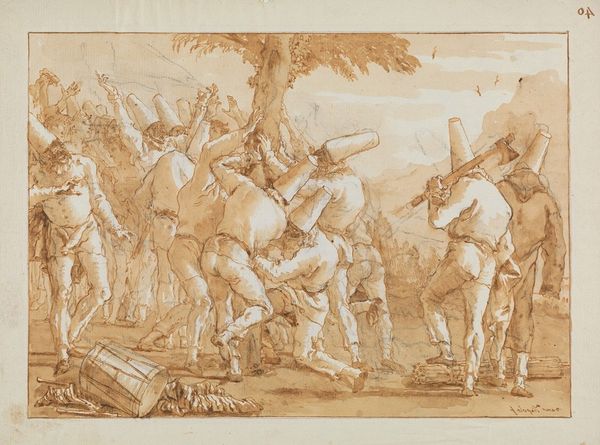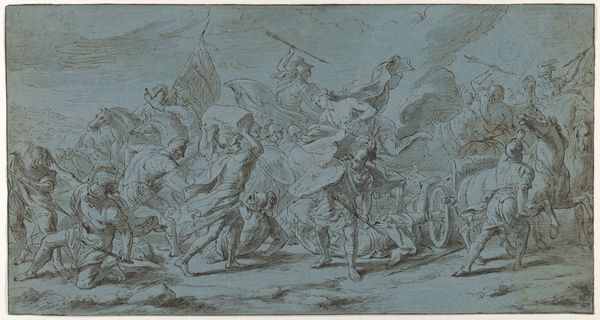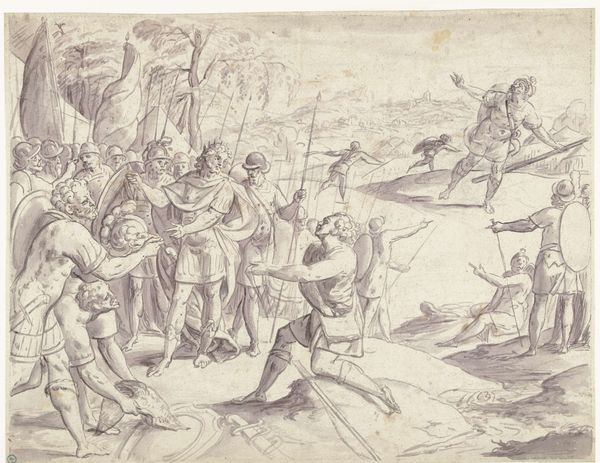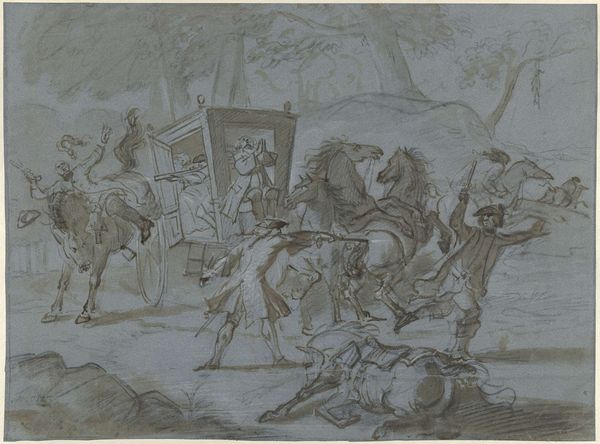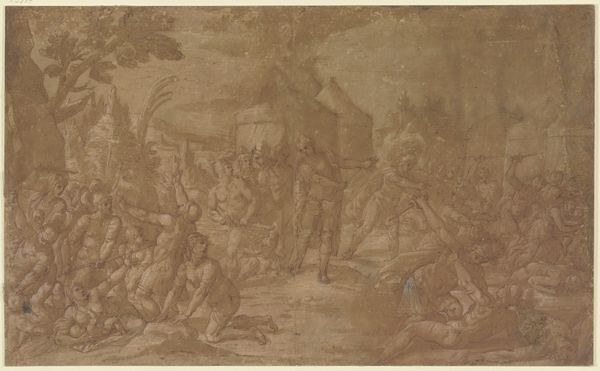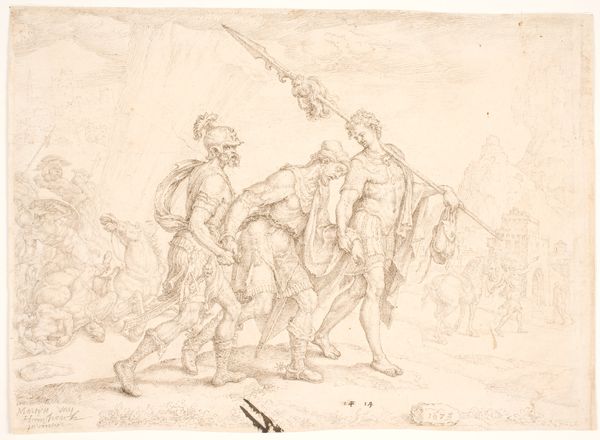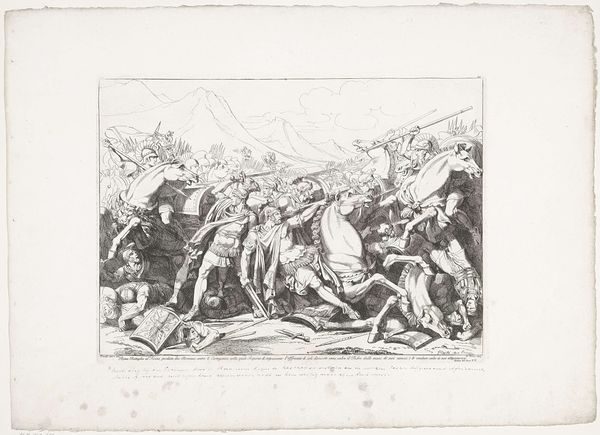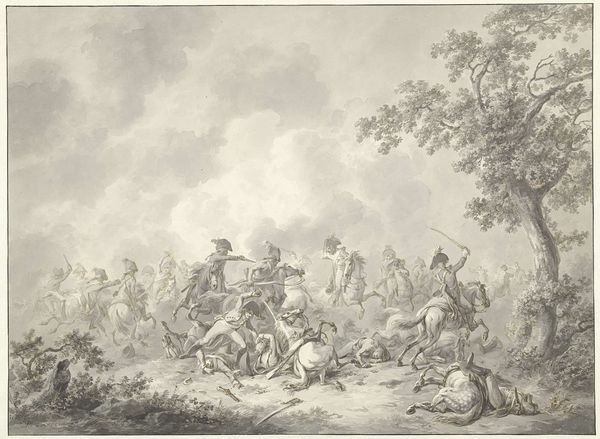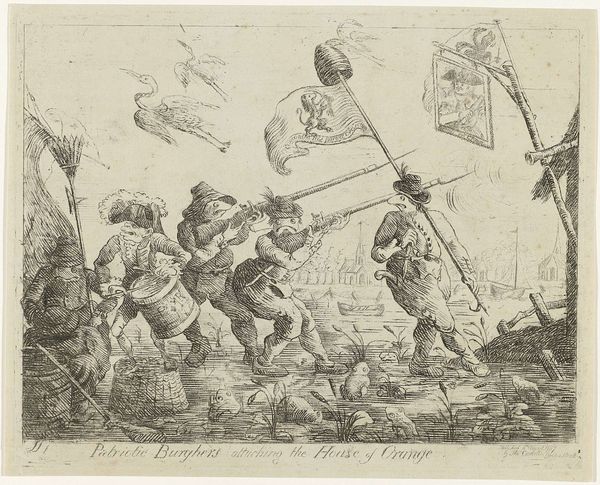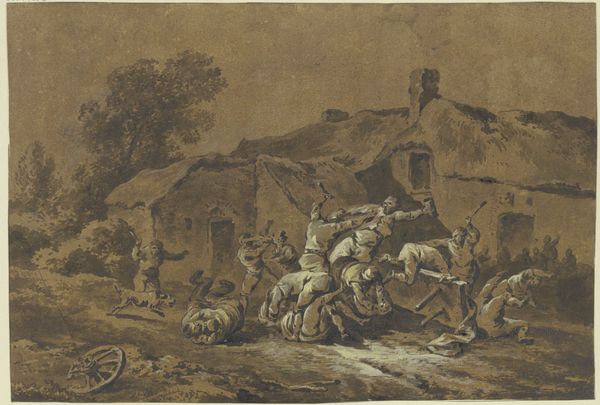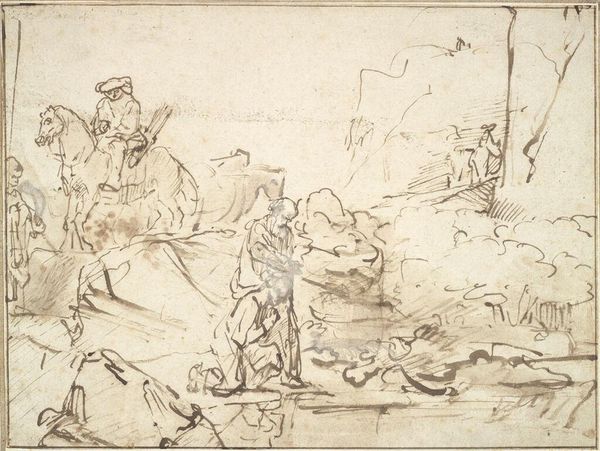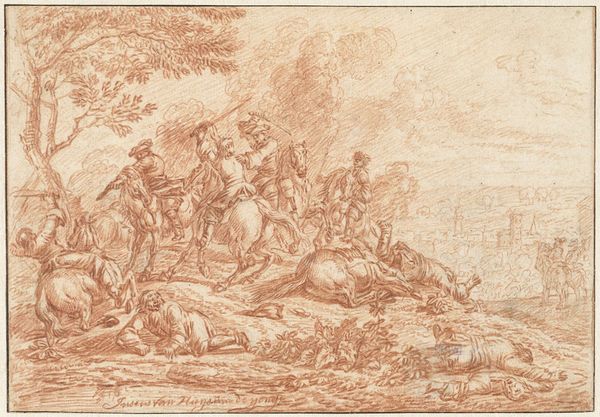
drawing, ink, pen
#
drawing
#
narrative-art
#
baroque
#
caricature
#
landscape
#
figuration
#
ink
#
pen
#
history-painting
Copyright: Public Domain: Artvee
Editor: So, this ink and pen drawing is titled *The apparition of the skeleton of Punchinello before his tomb*, by Giovanni Domenico Tiepolo. The frantic energy really jumps out, like everyone is scrambling to get away from something terrifying! What historical narratives are being represented in this artwork? Curator: Excellent observation. Tiepolo here engages with the *commedia dell'arte* tradition, and specifically with the figure of Punchinello, or Punch. We see not just Punchinello's skeletal form emerging from his tomb, but the panicked reaction of the other Punchinellos. Think about this drawing not simply as an illustration but as a commentary on the role of comedy, and even mortality, within Venetian society. Consider who had access to or commissioned such artwork. Editor: It seems pretty dark for comedy! Is it a criticism, then? Who *was* Punchinello to the Venetians? Curator: Precisely. Punchinello was a stock character – a buffoon, often rebellious and always irreverent. By depicting the other Punchinellos fleeing in terror, Tiepolo is perhaps critiquing the superficiality or fleeting nature of their performances, or even commenting on social fears about death and accountability in Baroque society. Given the drawing medium, this imagery has not been crafted for large displays, it is worth considering if there is an inherent layer of secrecy around what is presented. What elements make this a caricature and a "history-painting" at the same time? Editor: The exaggeration of the figures, the frantic poses, it all feels exaggerated, almost silly. But placing it against the backdrop of history… it gives it a certain weight, even when considering death. Thanks for shining a light on how much social commentary can be woven into what seems like a simple drawing. Curator: And how historical narratives and anxieties can be rendered, examined, and even playfully critiqued through caricature. Always remember to consider the social context and the intended audience. Art, especially something that is not public art, is a lens reflecting and refracting social power.
Comments
No comments
Be the first to comment and join the conversation on the ultimate creative platform.

